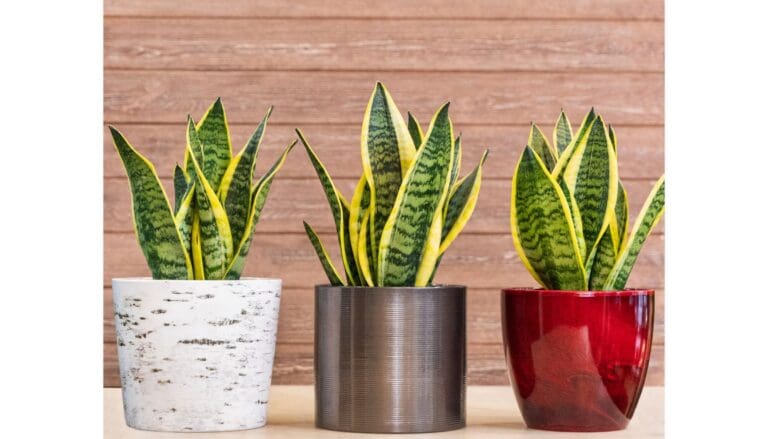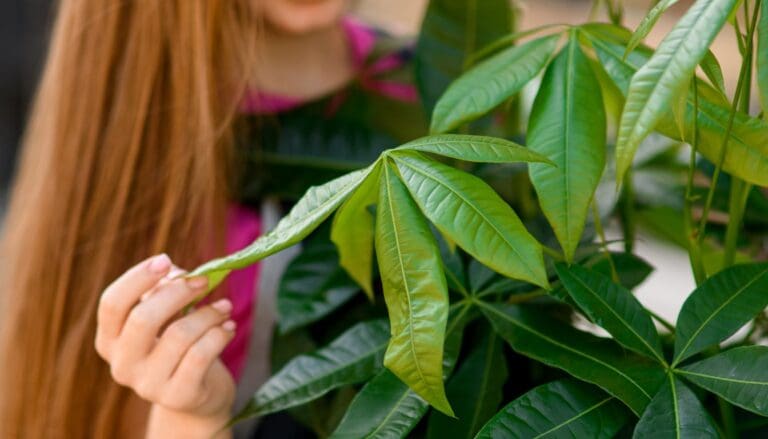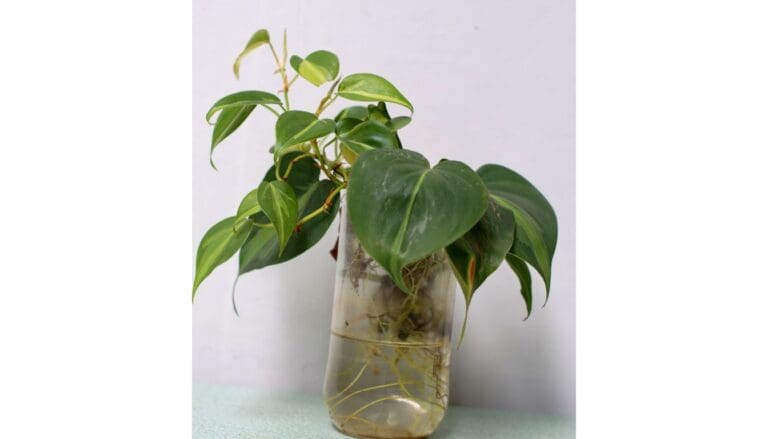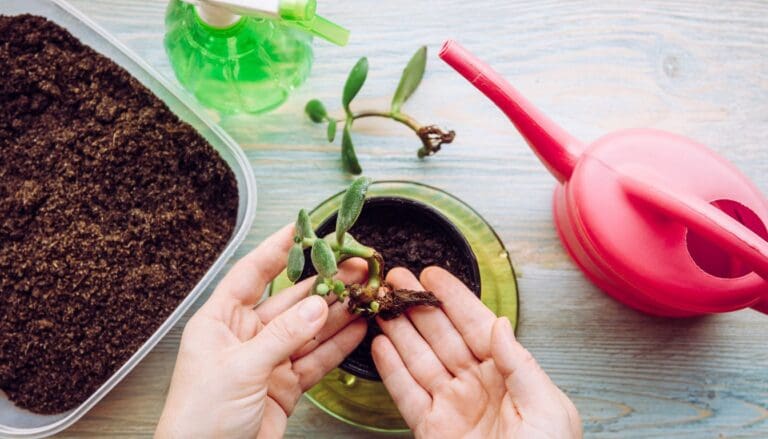Root Rot In Croton: Signs, Causes & Fix
Among all the nightmares that baffle houseplant owners, root rot is one of the most difficult to deal with. It is a disease that occurs in the roots of the plants when the soil has constantly been too wet.
But what are the signs of root rot in croton and how can you fix croton with root rot.
Discolored leaves, smelly soil, stunted growth, and brown and mushy roots are apparent signs of root rot in crotons.
The roots of your croton get suffocated due to excess water, poor drainage, wrong potting mix, and lack of airflow to the roots leading to root rot.
To save croton suffering from root rot, you can follow these steps:
- Examine the plant for possible signs of damage and prune the damaged parts.
- Take the plant out of the soil and examine the roots properly.
- Trim any brown and mushy roots leaving behind fresh roots.
- Clean the healthy root with water and some fungicide solution.
- Replant the croton in a new pot using fresh soil mix.
- Water the plant only when the top inch of the soil gets a little dry.
- Also, make sure to keep the plant in bright lighting conditions.
This article will explain everything you must know about root rot and how to fix your croton if it develops root rot.
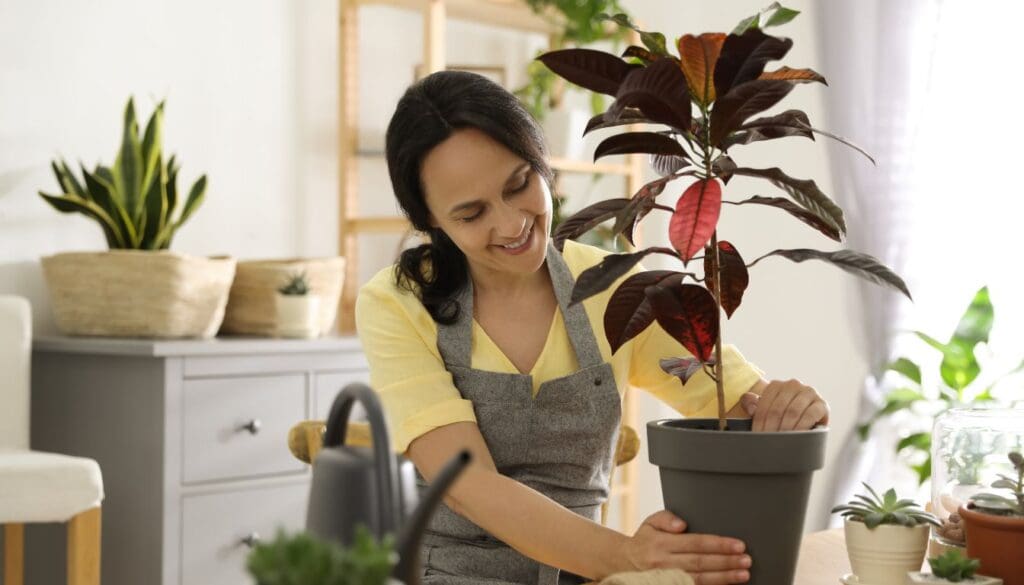
Please note: Simplify Plants is reader-supported. Some links in the post are affiliate links and I get a commission from purchases made through links in the post.
What are the signs of root rot on crotons?
Root rot occurs when the plants’ roots are attacked by pathogens that decay.
The healthy white roots of the plants start to decompose and turn brown and black, and they become mushy and die gradually.
They are no more able to store the necessary nutrients.
This rotting starts from the roots and quickly spreads in the plant’s body, showing signs of stress and trauma like wilting, stunted growth, leaves falling off, etc.
The significant viruses that lead to root rot are Fusarium, Pythium, Rhizoctonia, Phytophthora, etc.
Plants grown in containers are more prone to root rot because the excess water in the soil cannot escape, leading to the growth of mold and fungus, ultimately leading to the rotting of the roots.
Detecting root rotting in the initial stage is quite tricky because it is invisible to the eyes; however, that can save the croton.
Let us discuss a few early signs of root rot in crotons.
- Slow growth is one of the first indications of stress in the plant.
- Yellow, brown, or black leaves are another warning.
- Leaf curling is another sign that your croton might be under stress.
- Another crucial indicator of overwatering is that the soil remains mushy and wet most of the time.
Root rot warning
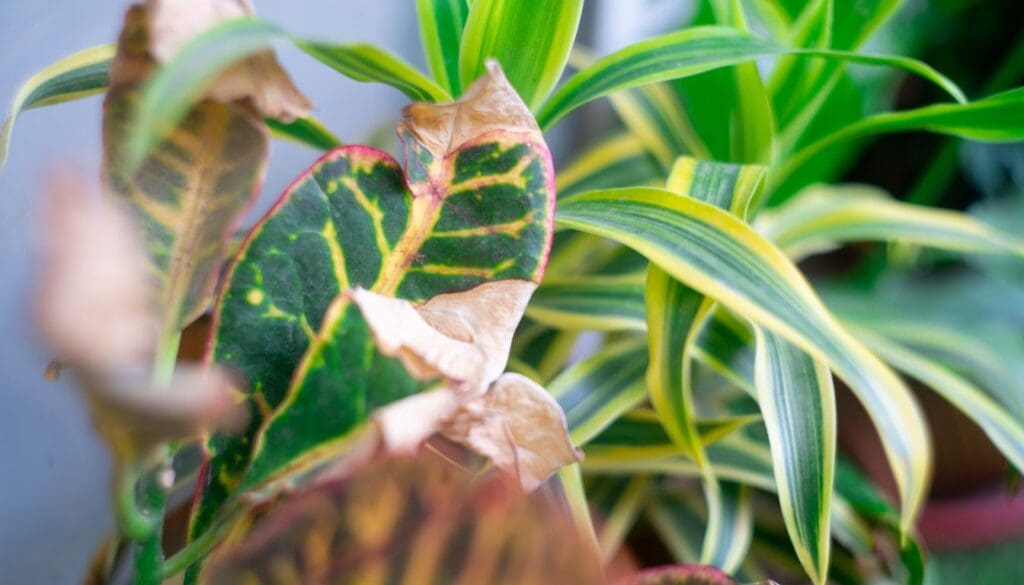
Since the rotting starts from the bottom, the infection starts coming upwards from the bottom of the croton.
The moment you doubt root rot, you must pull out your croton from the pot and inspect the roots.
Knowing that root rot has started if the crisp white roots become yellow and soft.
Also, the roots start to smell.
Healthy roots smell an earthy scent and are odorless; however, rotten roots have a pungent smell.
The final stage of root rot
In the last stage of infection, the roots turn mushy and brown and gradually black.
If it is not stopped, the infection will spread to the whole plant, and it will eventually topple over.
What are the causes of root rot on crotons?
The primary cause of root rot is overwatering and soggy soil. The pathogens thrive in such an environment.
Now let us discuss the primary causes of the infection:
Overwatering
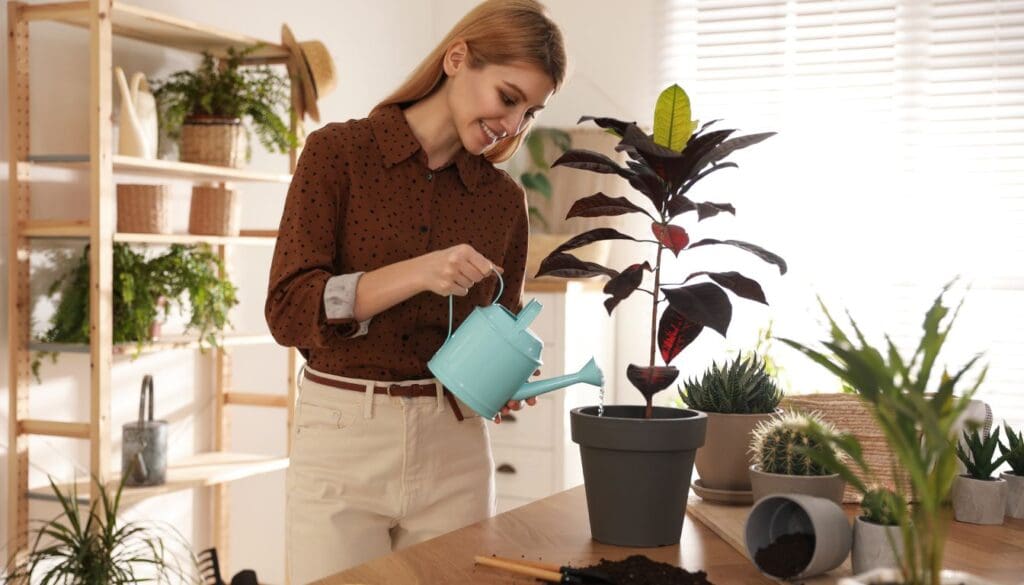
This is the most common cause of root rot that kills many plants worldwide.
Overwatering lowers the soil’s oxygen level and suffocates the roots, creating ideal conditions for these pathogens.
Also read: How To Save Overwatered Croton Plant? (Signs, Problems & Solution)
Lack of drainage of the pot
It is crucial to plant your croton into a pot with drainage holes, so that excess water does not stay in the soil and gets out of the hole.
Many growers add an inch layer of rock at the bottom of pots, but this is not beneficial between excess water remains stagnant at the bottom layers.
Many growers put their plants in fancy pots without drainage holes. This is highly harmful to your croton.
Tip: If you want to display your croton in a fancy pot, you can put the plant in an ordinary pot with holes at the bottom and then put that pot inside the fancy pot.
This way, the excess water will not stay in the plant pot and will drain out.
Poor draining soil
It is important to make the soil of your croton light and well-draining.
Heavy soil becomes compact and holds excess water.
This is why almost every plant, including crotons, requires well-draining soil so that water does not stay clogged.
To make the soil well-draining, you can add perlite, sand, or cocopeat.
Also read: What Kind Of Soil Does A Croton Need? (+Ideal Soil Mix & Requirements)
Wrong pot material

When planting your croton, clay containers are the best because they are porous.
The excess water in the soil evaporates through the pot’s body, and therefore the soil can breathe.
This does not happen with plastic or ceramic containers that keep the soil soggy and trap moisture.
Also read: What Kind Of Pot For Croton? (Pot Size, Material & More)
Wrong pot size
Many people mistake planting their favorite croton in an excessively bigger pot to avoid repotting in the future.
This is harmful as excessive soil can clog the delicate roots of your croton and hold too much water, leading to rotting.
Also read: What happens when you put a plant in too big of a pot?
You forget to empty the cache tray.
A cache or a saucer is placed under the pot to collect the excess water from the drainage hole.
We often forget to empty the cache tray, and it remains full of water, which keeps the soil soggy.
Tip: A tip is to place the pot over a layer of pebbles. This drains out the water and does not stay soggy, and it helps to increase the humidity, too, which crotons love.
Frequent watering in lower temperatures
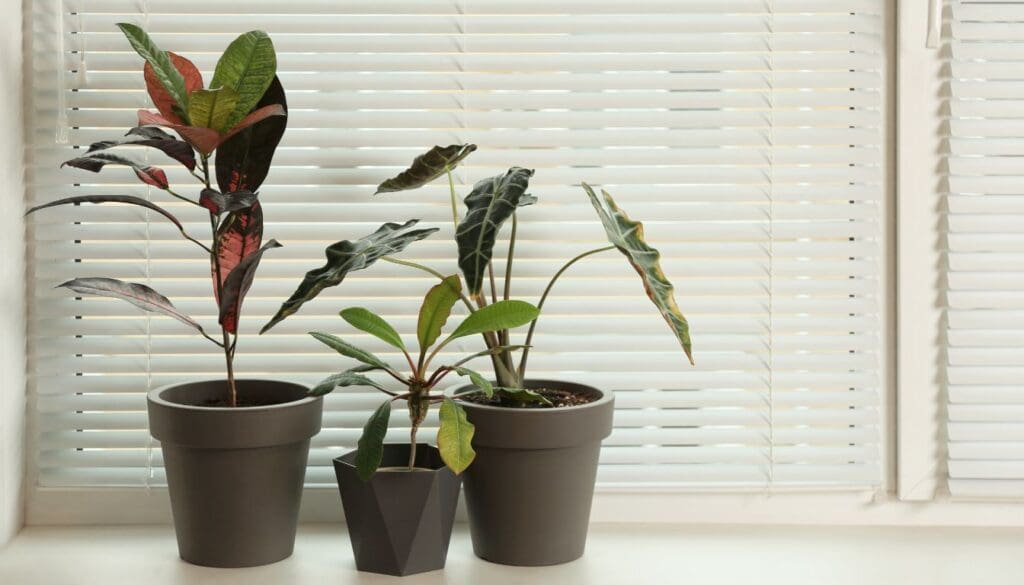
It is crucial to regulate the watering schedule depending on the temperature.
In cooler or rainy seasons, you need to reduce the watering, and in summer and spring, your croton will need more water because the evaporation is higher.
Buying a croton that is already sick
An absolute tragedy that occurs to plant owners is when they unknowingly purchase already infected plants.
The initial stages of root rot are difficult to notice.
It is best to avoid plants that look wilted or have a soggy or blackish stem.
Buy plants from reputable vendors after thoroughly examining the plant’s body and quarantining the plant for a few days after bringing it home.
Poor ventilation
Lack of airflow around the croton can make the soil soggy, whereas air circulation can increase evaporation rates.
This sometimes happens when you group too many plants to raise the humidity, leading to poor ventilation and the soil staying soggy for a longer time.
Watering needs
Many plants go into dormancy at a particular season, and during this time, they require lesser water.
Continuing with the regular watering schedule can lead to overwatering in this case.
Although crotons don’t become dormant in any season, the water requirement reduces in winter due to low temperatures.
Also read: How Often To Water Croton Plant? (Watering Schedule+Watering Problems)
Infected tools
You must disinfect all the equipment used for the plants.
Otherwise, pathogens can cling to them and spread to healthy plants too.
Stress
Besides invading soil that is overwatered and soggy, pathogens also attack croton, which is under stress due to physical damage, drought, over or under fertilization, or any other environmental hazard.
How do you cure root rot in croton?

If you detect root rot in the initial stages, you can stop it and save your croton.
To treat the root rot in croton:
- Remove the croton from the pot and wash off the soil from the roots.
- Carefully cut all the damaged roots with sterilized pruners keeping only the healthy roots.
- Repot the croton in fresh well-draining soil in a clean pot and water until it comes out of the drainage holes, and do not water until the soil gets dry.
The severity of the treatment depends on the extent of the damage.
It is best to avoid fertilizers until the plant is healthy again.
Mild root rot
If you find root rot in its early stage when the soil remains wet but there is no sogginess or pungent odor, it is advisable to cut back watering until the soil is completely dry.
Keep a check on your croton’s health.
In the mild stage, you can cure the infection by letting the soil dry between watering.
Remove any mulch that falls on the topsoil to allow maximum evaporation.
Air circulation around the plant should be encouraged.
If the soil remains wet for too long, try taking out the soil and spreading it under the sun or fan to quickly dry it and put it back in the pot once dry.
Severe root rot
Repotting is the only way out if the root rot is severe with only a few healthy roots.
You must do it very carefully because repotting causes stress for the plant.
Follow these steps for repotting:
- Take the croton out of the pot and scrutinize the roots.
- Wash the roots to eliminate the soil attached to the roots.
- Trim all the brown and soft unhealthy roots with sterilized pruners.
- Prune all the damaged leaves.
- Prune some healthy branches and foliage to even out the plant and reduce some stress from the roots.
- Repot the croton in a well-draining potting mix.
- Place the repotted croton in bright indirect light and restart the watering carefully.
- Keep the croton away from the other plants so that if the rotting returns, it does not spread to other plants.
- However, you might need to discard the croton if the rotting returns.
- Water the croton plant less than before because it has lesser roots now.
Final root rot stage
If all the roots of the croton start rotting, you will need to discard the plant.
This is because you can’t save a plant with no healthy roots. It can also infect other plants.
You must also discard the soil along with the plant.
Root rot treatments for croton
There are different ways of treating root rot that has advanced. Let’s discuss some.
Spray fungicides on the roots
These can be powerful but have side effects as well.
Some nurseries and professionals offer services to treat this kind of problem.
The problem with fungicides is that these can destroy beneficial natural soil organisms, damaging and weakening your plant’s natural immunity and making it more susceptible to rotting and other diseases.
Natural ways of treating root rot
Many people prefer natural methods over chemical fungicides.
You can spread cinnamon on the roots while repotting the croton and add chamomile tea to the water while watering the croton.
These will help the croton recover faster from the root rot and repotting stress.
How to prevent root rot in croton?
Preventing root rot is always better than treating it.
Since root rot can cause immense damage to your croton, you should try to protect the plant from it.
Correct the watering
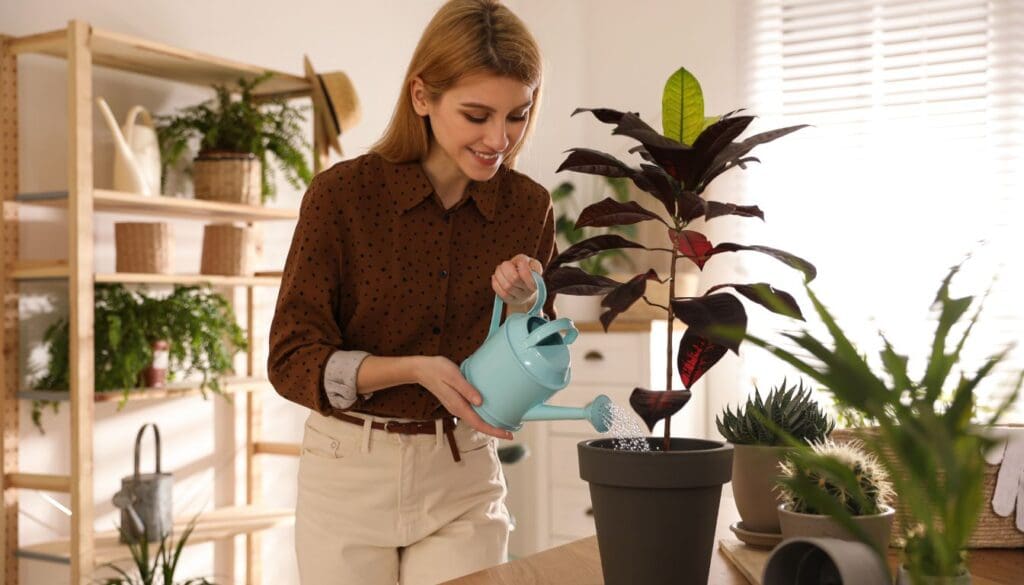
The first thing you must take care of is determining the water requirements of your croton.
Most crotons love the full sun and require a lot of water.
However, you should never water your croton without checking the soil’s moisture content.
If you come up with a watering routine and follow it blindly without checking the soil’s moisture, you will end up overwatering it, which will cause root rot.
But if you water only when the top layers of the soil feel dry, you will not overwater the plant.
Also, consider other external factors such as season while watering the croton.
Use the correct pot
Always use a correct-sized pot that is not too big for your croton.
A bigger pot tends to get overwatered as it holds more water than the plant needs.
One more critical point is drainage holes. Never use a pot that doesn’t have any drainage holes.
If the one you got doesn’t have drainage holes, drill some before putting the croton in it.
The wrong pot size and lack of drainage holes make a poor drainage system ideal for causing root rot.
Prepare suitable soil
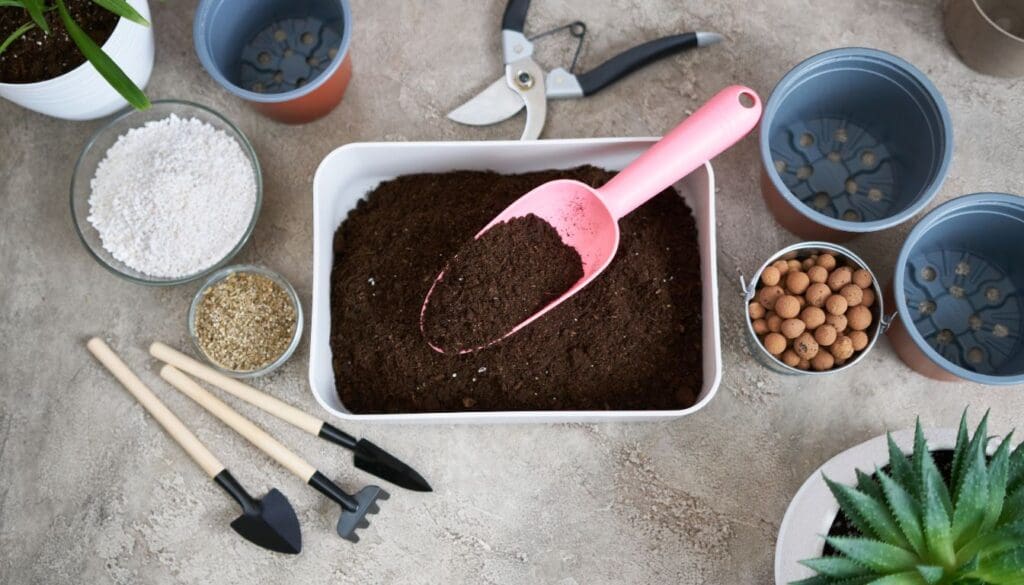
Not using the correct soil can also lead to root rot.
The suitable soil will hold enough moisture to keep the croton happy and drain the excess so that the soil doesn’t get waterlogged.
Too heavy soil will suffocate the roots and cause root rot.
Encourage proper airflow
Lack of airflow can encourage pathogenic infections like root rot.
Make sure to place your croton in a well-ventilated spot, and the plant gets proper airflow around it.
Keep an eye on your croton.
You should always check your croton so that you can catch any unusual signs of a problem at the earliest.
Even if your croton develops root rot, checking on it will help you treat the problem at its initial stage and save the plant from serious problems.

Reference: Sciencedirect, Wikipedia, Wikipedia, Britannica, CABI, Academia, University of South Florida, The University of Georgia.
Recommended Garden Supplies
| Product Image | Our Recommended Gardening Supplies | Check Offers! |
|---|---|---|
Top Top
Top
Top
Top
Top
Top
Top
Top | rePotme Houseplant and Tropical Classic Potting Soil Mix | Check Offer On Amazon |
 Top
Top
Top
Top
Top
Top
Top
Top | Espoma Organic Indoor Plant Food | Check Offer On Amazon |
 Top
Top
Top
Top
Top
Top
Top
Top | GooingTop LED Grow Light 6000K Full Spectrum Clip Plant Growing Lamp | Check Offer On Amazon |
 Top
Top
Top
Top
Top
Top
Top
Top | Soil Moisture Meter | Check Offer On Amazon |
 Top
Top
Top
Top
Top
Top
Top
Top | Govee Hygrometer Thermometer, Bluetooth Enabled! | Check Offer On Amazon |
 Top
Top | LEVOIT Humidifiers for Large Room(Best For Plants) | Check Offer On Amazon |
 Top
Top
Top
Top
Top
Top
Top
Top | Upgraded DIY Automatic Drip Irrigation Kit, 15 Potted Houseplants Support | Check Offer On Amazon |
 Top
Top
Top
Top
Top
Top
Top
Top | Stainless Steel Heavy Duty Gardening Tool Set | Check Offer On Amazon |
 Top
Top
Top
Top
Top
Top
Top
Top | Bonide Insecticidal Soap | Check Offer On Amazon |
 Top
Top
Top
Top
Top
Top
Top
Top | Bonide 32 oz Spray Neem Oil for Organic Gardening | Check Offer On Amazon |
 Top
Top
Top
Top
Top
Top
Top
Top | Garden Safe Fungicide | Check Offer On Amazon |



